They also loaded it with equipment and technology, but took away the aesthetics of the car and its dynamic behavior. The engines were no wonder either, and to make matters worse, many of the optional equipment ended up failing, with reliability problems too present, especially in the electronic front.
The first generation 308 only served to worsen the aesthetic level. To an already ungraceful design was added an exaggerated baroque look, with a difficult to digest front end, and no appreciable improvement in the dynamics of the chassis or interior finish. Surprising to think that the very interesting and capable RCZ-R had so much to do with the 308?
But Peugeot has reset. It has reinvented itself. It did it first with the 208, and continued the journey with the 308. The turnaround turned out to be 360 degrees, with a car that is lower, more traditional in its proportions, and with a new focus on cabin quality and driving dynamics.
For a week we have been at the controls of the 308 GT, the sporty variant for those who, without having the 100% focus on performance needed to go for a GTi, are looking for a car with horsepower and with which they are going to do miles. That's why, given that the GT with diesel engine takes most of the sales, and because it is also the perfect tool for those who work with a lot of road in between, we decided to choose the mechanics of 180 horsepower diesel for our test, which is associated by obligation with the six-speed automatic transmission with torque converter, signed by AISIN. And the surprise was positive.
Design
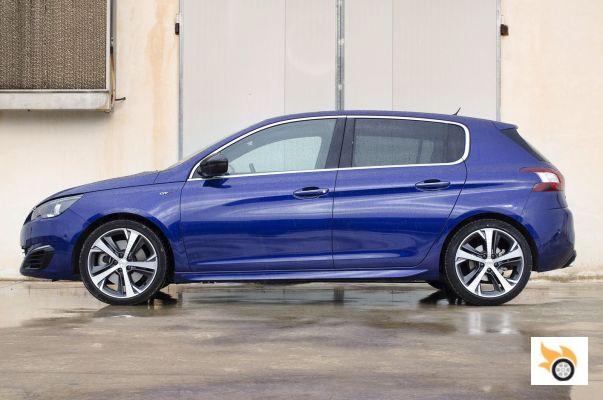
The 308, especially in GT finish, wins when you see it live. The Gallic car abandons the extreme baroque and opts for a better adjusted and balanced design between its elements. The loss of height is phenomenal, but it is the careful work to marry the fins with the tires, adjusting and embracing them, as well as the horizontality and visual width, especially of the rear, which just convince you.
No, it's not a car that unleashes passions, but in vivo it stands out positively, ahead of its German rivals. It's a less cold car, more organic, with better surface work than VAG's offerings, and with careful details like the rear light clusters or the front ones with sequential LED flashing lights.
As I said, it's a car to see and touch live, because it's much better than in a photo. In addition, it is live where you see the improvement of the work when it comes to adjusting panels consistently by Peugeot, or the integration of the rear lights, perfectly flush with the bodywork.
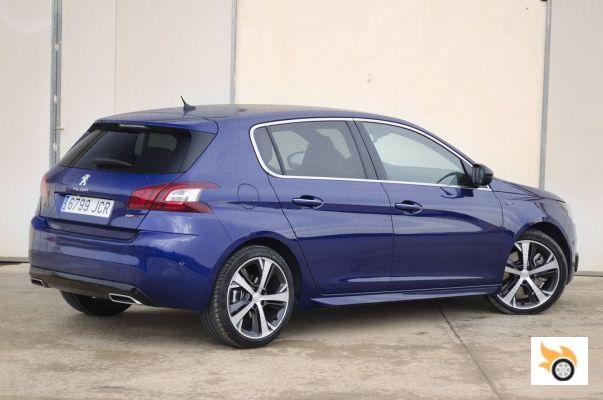
True, the exhaust tails at the rear of the bumper are more fake than Paris Hilton's breasts, but at least the aesthetic detail looks good on this GT.
Cabin
On the plus side, when you open the door, the car still leaves a good taste in your mouth. For starters, the car has personality and character, and that's always welcome. In a boring world where many manufacturers seem to copy each other's ideas all the time, Peugeot went for the idea of the raised dashboard on top of a dashboard that looks like modern living room furniture, and the idea works.
I've read complaints from colleagues who say that the clock display can be hidden behind the steering wheel rim, or that the steering wheel itself "is small and too low" or "in a strange position". I'm guessing that these colleagues have never driven a rally car in their lives. Peugeot, who know something about WRC racing, have opted for a design that, at least for my height and driving position, leaves the dashboard perfectly visible, without having to pull a head-up display, while the steering wheel falls just where you'd want it if you were racing in the Thousand Lakes in a venerable 206 WRC with Grönholm lettering on the rear side windows.
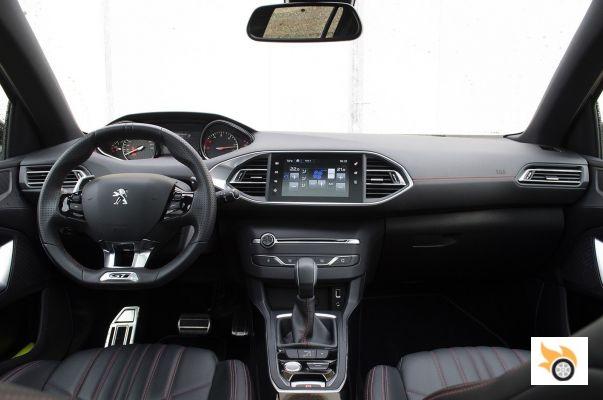
The seats are good, with good lateral and lumbar support and electric adjustments. They fail in the bench, which in my opinion is insufficient in the inclination of its front part to rest the thighs and grab you under braking, something reinforced especially by the slippery leather under braking.
The whole dashboard is made of laminated plastic with foam inside that gives it a soft touch, and a red stitching that gives it a touch of quality. All the finishes in this area are pleasing to the eye and touch, with the touchscreen infotainment display as the centre of operations.
It's where you control just about everything. It's a good thing for many things, but not all. Having the climate control integrated into a touch system is a problem, as it's difficult to control it with your finger while driving, and requires too much attention. Peugeot would have been more successful with the 208's physical controls for the climate control, seconding the tactile.
And then there's the cruise control, which comes from... fifteen years ago? You can't see it behind the wheel, and it's counter-intuitive if you haven't known it for a while. It would have been very easy to create a steering wheel with a few more controls to integrate more services.
This also creates problems in the use of certain technologies available in the car, such as the adaptive cruise control, with which to adjust the distance to the car in front you have to touch the central touch screen... It's true that once you've adjusted it you can forget about it, but it could have been solved better.
The central console between the seats could also be better resolved, as it creaked in the test car when the knee rested on hard bends.
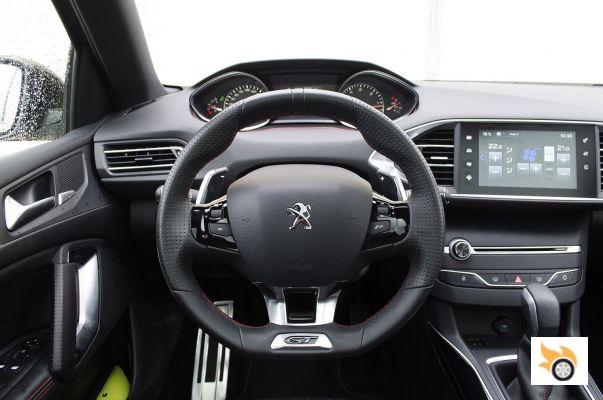
The space available in the front seats as well as the settings leave it in the average of the segment, and the same can be said for the rear seats. The boot, with four hundred litres, is more than enough for any family of four on any necessary journey, so all this can be summed up as a C-segment car as suitable as any other for travelling with the family.
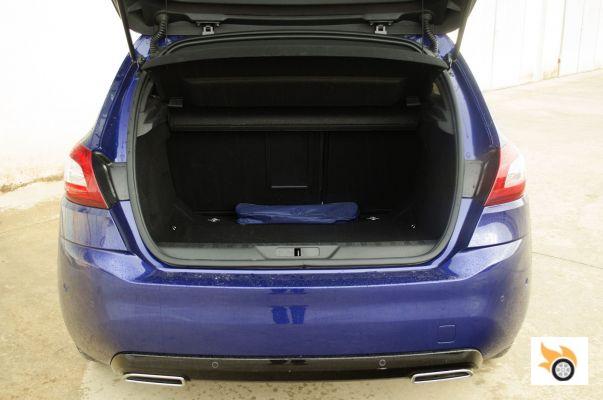
Technology
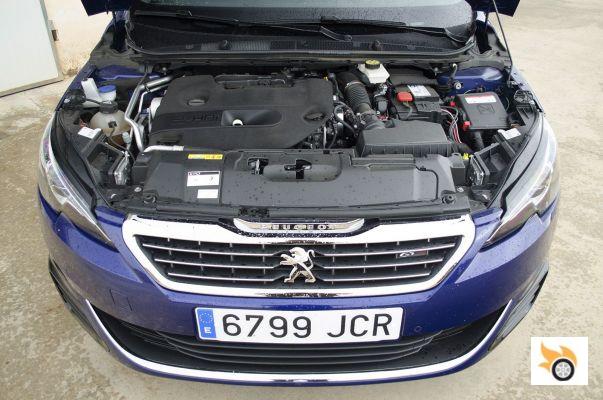
The 308 GT diesel uses a two-litre diesel with a cast-steel block and aluminium cylinder head with 16 valves, common rail direct injection and variable geometry turbocharger.
It sits on the same chassis as the rest of the 308 range, with McPherson strut suspension at the front and a rear suspension with wheels linked by a transverse torsional member, supplemented by springs and shock absorbers. There's no room for a high multi-link suspension, but as we'll see below, it's not lacking either, just as you wouldn't want a piloted suspension.
The automatic gearbox is a leap forward by Peugeot, which has pulled the Japanese manufacturer Aisin to provide a torque converter automatic gearbox with six ratios and the possibility of sequential operation through buttons integrated behind the steering wheel, in the form of cams that are not such (the touch is somewhat strange).
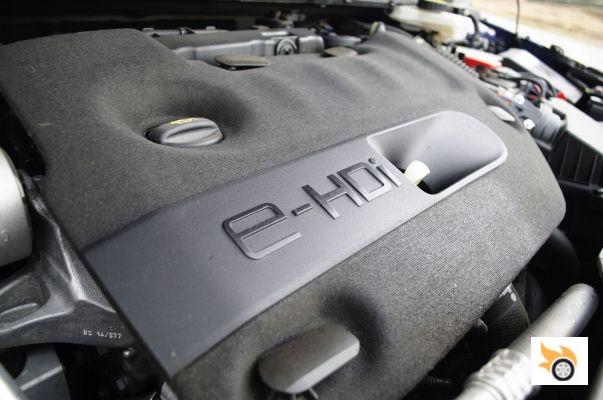
All the suspension and bearings tuning is calibrated in a special way in this GT compared to its range brothers to give the car a sportier feel, but without burdening the ride comfort.
The torque figures (400 Nm at 2,000 rpm) and power (181 hp at 3,750 rpm) are decent, without being meteoric, while the homologated consumption of four liters per 100 kilometers is remarkable compared to the competition. In terms of equipment, it is worth mentioning the use of the aforementioned active cruise control radar, as well as other active safety elements such as the LED headlights (LED, yes) for the low beam and high beam functions.
Driving
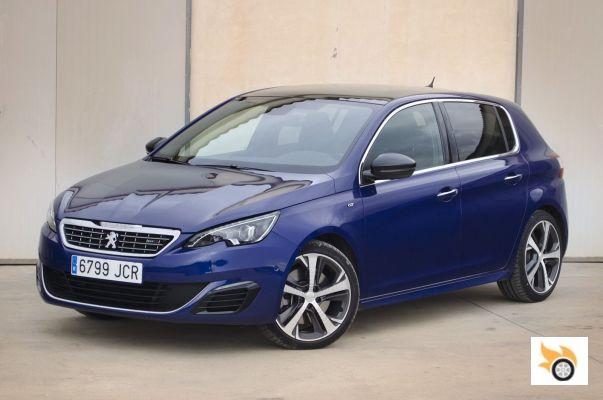
Starting the 308 GT diesel can come with a degree of disappointment, especially if you do it with the door open, as the two-litre sounds like a tractor to a considerable degree. But once you release the electric handbrake and get going, you quickly forget about the engine's tone and focus on its goodness.
The first thing that strikes you already in the first few meters is the successful combination of gearbox - engine - suspension for relaxed driving. The Aisin gearbox works very well and allows to sweeten the generous delivery of torque, while the suspension, despite feeling a bit sporty from the moment you start to walk, swallows bumps, speed bumps and irregularities of the asphalt without surprises.
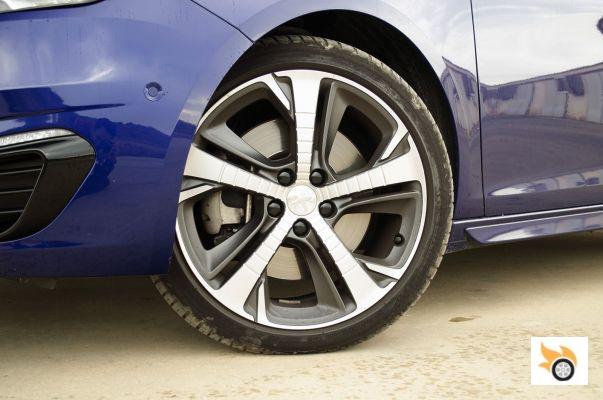
Beyond the city, on motorways, the car is more than capable of maintaining high or very high cruising speeds in an indefatigable manner and with a fuel consumption of five litres per hundred kilometres, with sound and suspension comfort. Crosswinds or asphalt irregularities will not bother you. Even on national roads, having to overtake, you will be pleasantly surprised, with an 80-120 in six seconds that allows you to overtake with total safety and confidence.
The drawbacks in this environment, where the sound system is very pleasant, come from the cruise control. It may be active, with radar to read preceding vehicles, but, at least in the test unit (and it's not the first time it's happened to us with a 308), it fails too much. There are cars that it doesn't see at all, and others that, even if you see them from many meters away, it is unable to decelerate the approaching car first, throwing you towards them at speed to, after a few meters, warn you that "the car in front is too close" and leave you looking silly as you step on the brakes due to the inability of the system to work as it should.
An unrefined system, therefore, this active cruise control, which requires you to drive as if it were a "traditional" cruise control. Be warned.
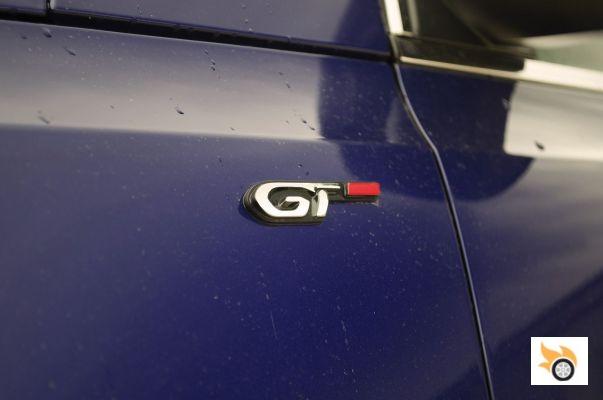
If you want to have a bit of fun, just press the "Sport" button next to the electric parking brake. When you do, the instrument cluster takes on a nice red hue, and the steering assist settings, electronic throttle mapping and automatic transmission programming change.
The problem is that the throttle response in its first few millimetres of travel becomes too brutal, and the gearbox reacts too aggressively too, even though you can put it in manual mode. The feeling at that moment is that the car is "too fast". But it's a false perception when you keep looking for the engine's tickle.
The 400 Nm of torque are noticeable, yes, but they run out very quickly, with just 1,750 revolutions per minute to play with between maximum torque and maximum power, which makes you have the feeling that the engine pushes when you start accelerating, but it soon runs out of steam.
In the end, you realize that the GT, with a diesel engine, is a fast car, but the engine is not sporty or muscular. It's simply a fast gas guzzler on the powertrain front, not a ballistic missile. In that sense, there are engines in the competition with more muscle without losing finesse (the Giulietta's 175bhp Multijet 2 is a good example), although this HDi is ahead of the Leon FR's TDI, for example, in ride finesse, vibration and throttle response, regardless of the performance on offer.
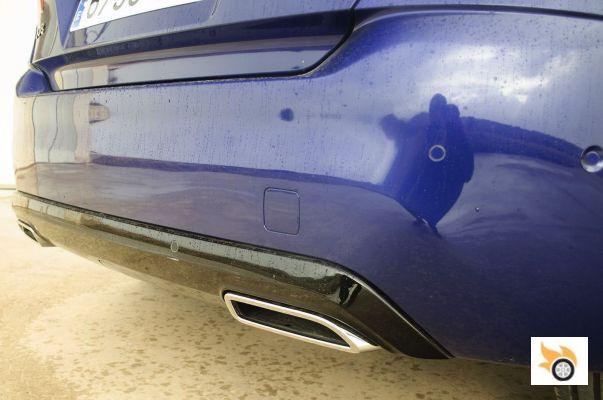
But the best news about the 308 GT comes from its chassis tuning. Certainly the steering wheel is inert, and does not inform you of what happens at the front wheels, but at least the line is very precise and the car is much less understeering than its direct predecessors. The suspension tuning, the weight balance, the polar moment of inertia and the rigidity of the monocoque all work together to make the car neutral and interested in entering corners if you demand it, eager to change trajectory, and with little roll and pitch.
And it achieves all this without sacrificing the ability to absorb bumps and irregularities, even in strong support, which allows not break the line, and not discomfort to passengers, who travel in comfort. In that sense, the 308 GT has the "perfect" set-up for my clinical eye, at the level of a fast compact for the whole family, capable of not choking on a pass, but without being uncomfortable when you travel with it to your holiday destination or take the kids to school.
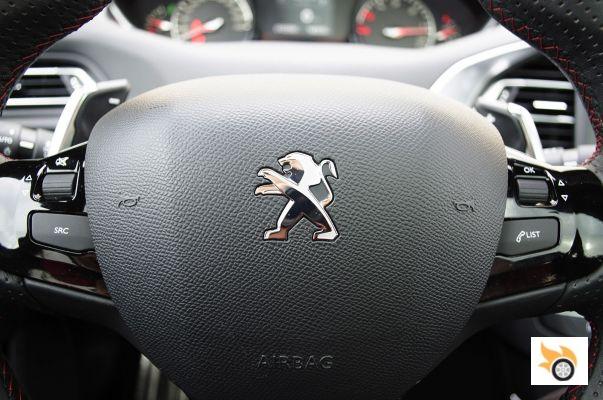
Interestingly, with the "Sport" mode activated, the car emits a completely fake sound through the speakers to give the sensation of driving a powerful and powerful petrol engine. But it is so ambitious and unreal that it ends up being even comical and totally dispensable.
The gearbox, in manual mode, is neither quick nor satisfactory if you're looking to get the most out of the engine. There are better torque converter gearboxes (the ZF used by BMW in the 1 Series, for example) and the dual clutch ones are still better. At least the Aisin torque converter does "well" in almost everything else, and the fact that it's not particularly sporty or suitable for manual driving shouldn't be a drawback for this car's primary intended use. In addition, the combination of this gearbox with the automated start/stop system to reduce fuel consumption is commendable, to the point of being one of the best we've tested, close to Mazda's system.
Consumption, even with spirited driving in mountain passes, hardly goes beyond 6.5 liters per 100 kilometers, which is commendable.
Conclusions
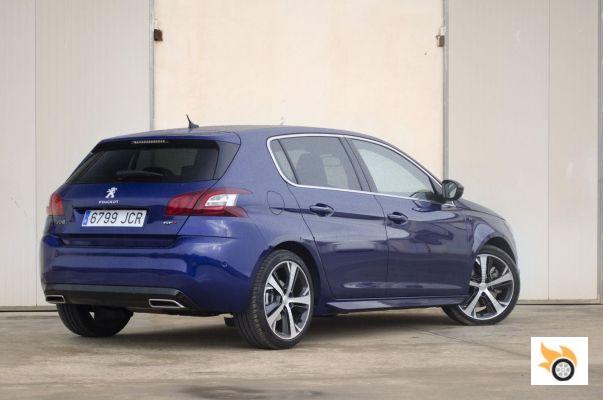
Honestly, the 308 GT has surprised me in a positive way. A Leon FR TDI, as the most direct rival for price and engine, is behind the Peugeot in many respects, such as engine response or the quality of interior finishes, as well as the presentation of the same. The cars that can overshadow the 308 GT with a diesel engine are much more expensive (a Golf GTD costs 35,000 euros, is less well equipped and the interior doesn't look any better).
Even more curious is to think about what you can buy for the 28.650€ that costs this diesel GT if you're looking for a premium, and is that you would barely reach to equip "equal for equal" to a three-cylinder 116d. The Focus ST diesel (29.575€) might be the other most direct alternative to this Peugeot, but just like the SEAT, the Ford model doesn't have such a well-kept interior, and it's probably a bit too tacky (I like it, but...) for the typical customer of this product.
I couldn't forget to mention a 175 hp TCT diesel Giulietta from Alfa Romeo. For 27.650€ you can buy it, which would save you 1.000€ compared to the Peugeot. The engine, although it officially has 6 horsepower less than the French model, is faster, has a wider range of use and is more satisfying, something that adds to a better automatic gearbox. But of course, the cabin and equipment are clearly behind the one offered by Peugeot, while in behavior I would place them evenly, although the driving position of the Peugeot is better.
So if you need a diesel car for your job, because you do 30,000 km a year or more. You also need four seats and a good boot, and you're looking for something that's quick, well finished, and priced under £30,000, the 308 GT is definitely one of the best buys you can make. It certainly has French details to be polished, such as the cruise control, both for its blindness and its ergonomics when it comes to manipulating it, but... "no car is perfect" yet.

























